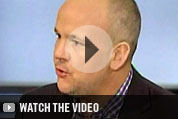The West Wing, Season II
Almost overnight, Barack Obama overhauled his White House and rewrote much of the script. Now all he needs is a happy ending.
ShareThis |
(Photo: Marco Grob) |
David Axelrod awoke at three in the morning and checked his BlackBerry. It was January 12, a few hours before Barack Obama would fly to Arizona for the memorial service for the victims of the Tucson shootings, and a few hours after Obama’s speechwriters had handed him a draft of the address he would give there. The president knew well that a big moment was at hand, that what was called for was more than mere eloquence, but a speech that was deeply … his. “I want to work on this,” Obama said to Axelrod upon examining the text. “I’ll have a redraft for you by ten or eleven tonight.”
But those hours had passed without any sign of the president’s revisions.
Now, as Axelrod combed his in-box in the predawn darkness, he saw an e-mail from Obama, time-stamped 1:20 a.m. Although the early portions of the draft remained largely intact, the president had thoroughly rewritten the crucial last two pages—from the call for a new era of civility in our discourse to the grounding of that challenge in the imperative of living up to the expectations of the fallen 9-year-old, Christina-Taylor Green. Axelrod recalled the last time his boss had taken such personal ownership of a piece of oratory: his speech on race in March 2008. Obama had labored over that one, too, late into the night, and after reading it in the morning, his message guru e-mailed him back, “This is why you should be president.” The Tucson speech inspired in Axelrod a similar reaction.
And not just in him. From the left, right, and center, the verdict was nearly unanimous: Here was a speech that was truly presidential, and that therefore—despite being driven by no crass political motives—became part of a larger political story.
Since the midterm elections, Obama and his lieutenants have been grappling with the implications of the self-described “shellacking” inflicted by Republicans on the president and his party, and laboring to devise a recovery strategy for the next two years. One of their chief conclusions is that Obama must occupy a higher plane than he did in the last two, elevating himself above the posturing, petulance, and incessant bile-spewing that have come to bedevil Washington in this age of incessant acrimony and polarization.
The lame-duck session in December—with the tax-cut compromise with Republicans as its centerpiece—presented Obama with his first opportunity to gain some altitude. The Tucson shootings offered another. And Tuesday night’s State of the Union address will extend him yet another.
But positioning and rhetoric are only part of the broader project under way inside the White House, which amounts to a full-scale reboot of the Obama presidency. The most visible manifestations of this involve personnel: the installation of William Daley as chief of staff, the departures of Axelrod and Robert Gibbs, the return to the fold of Obama’s 2008 campaign manager David Plouffe. Beneath the surface, however, substantial changes are afoot in every realm, from management structure and political strategy to communications, policy, and even the president’s conception of his own role—as he and his people try to navigate the newly Republicanized legislative landscape and gear up for what they now fretfully assume (after months of airily believing otherwise) will be a difficult reelection campaign.
For Obama, retooling on this scale does not come naturally or happily. Among the hallmarks of his political career has been constancy: a tight and basically static cadre of close advisers and a stubborn resistance to calls for midcourse corrections. Yet in a series of interviews in early January with senior White House officials and many of Obama’s closest confidants outside the building, a picture emerged of a president engaged in a searching, clear-eyed, and sometimes painful process of self-scrutiny, and now determined to implement a plan to fix what has ailed his enterprise—and himself. To put behind his White House the frenetic, transactional, shambolic style of former chief of staff Rahm Emanuel. To break out of the suffocating cocoon in which he and his team had swaddled themselves. To establish the kind of compelling narrative about where his administration intends to take the country and how it plans to do so that has been lacking since day one.
Judging the ultimate political impact of this endeavor will be impossible until November 2012. But contrary to the feral howling on the left or the applause of many Beltway tapioca centrists, the objective here has less to do with tacking to the center than with finding a way back home. What Obama seeks is to reconnect with the essence of why he was elected, to reanimate the unifying, postpartisan, pragmatic yet visionary persona that inspired so many in the first place. “What he wants,” says one of his friends, “is to be Barack Obama again.”


No comments:
Post a Comment